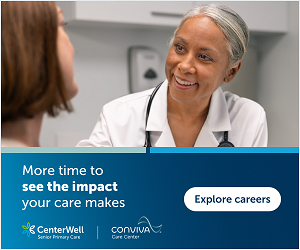I enjoyed reading the article titled “Fix the pay imbalance between specialists and primary care physicians” by Zachary Janowski and learned a great deal about the factors that have led to the discrepancy in pay between primary care physicians and specialists.
This article caught my eye especially because I just listened to the Freakonomics podcast episode titled, “Nurses to the Rescue.” The podcast discussed the primary care shortage in America and the influx of nurse practitioners that are now filling the gap. This episode made me re-think Janowski’s article. Instead of continuing the never-ending battle to increase the pay of primary care physicians, why don’t we re-focus our efforts to recruit and train more nurse practitioners, in response to the shortage?
The primary care physician shortage is serious, and all patients have the potential to be affected (the predicted shortage of PCPs ranging from 12,500 to 31,100 by 2025). The demand for primary care is projected to rise over the next five years, due to population growth, aging and expanded health insurance. Primary care physicians are often the first touch that a patient has with the medical system so if there aren’t enough providers, patients will have to wait longer for visits, which could make their condition(s) worse. Primary care physicians play a part in managing chronic diseases like diabetes, asthma and heart disease, which are some of the most pervasive and costly conditions in our society.
With rates of diabetes continuing to rise, primary care providers are needed more than ever. We can’t sit back and wait for medical boards and associations to change primary care physician pay as a solution, as the shortage will continue to get worse under this mindset. Instead, we must urge medical systems, institutions, and providers to think of nurse practitioners as the solution. All of these groups have a part in educating patients on the role of the nurse practitioner in the health care team and the scope of issues that they are trained to treat. If patients are more aware of the existence of nurse practitioners, they will be more likely to use them.
Our medical system needs to increase incentives, funding, and awareness of the importance of nurse practitioners in the primary care field. The medical education system needs to contribute by increasing recruitment efforts of nurse practitioners, especially to diverse populations. Institutions should offer more funding and grant opportunities to make graduate programs more affordable and accessible for everyone.
For many young people deciding about going into medicine, the cost is a major barrier because of the expense of medical school. For those who chose to go to medical school and have to take out loans, they often have to become a specialist in order to pay off their loans, hence the primary care physician shortage that’s projected. If more young people are aware of the lower cost of nurse practitioner school as compared to medical school as well as the demand for primary care providers, maybe they would be more interested in the profession. One-third of the physician workforce is now over the age of 55 and will be retiring in the next decade, hence the reason why we must outreach to young people about the importance of the NP profession. Graduate NP programs must partner with professional NP organizations to promote the profession and focus on outreach efforts.
If we consider the cost to the system and reimbursement as part of this conversation, nurse practitioners offer an ideal package as they are cheaper to train, have lower reimbursement rates and are paid less than primary care physicians. Health systems that are looking to cut or reduce costs should consider this as they could make more use of NPs to save money. Insurance plans save money as well when they use NPs as they pay lower reimbursement rates for visits, as compared to a PCP. The Association of Medical Colleges called for an additional 3,000 residency slots each year from 2015 to 2025, but the estimated cost of the additional training positions for the next decade is about $10 billion! While this effort will hopefully increase the number of PCPs, this cost of training is extreme. If NPs are used as a solution to the shortage, it will not cost $10 billion.
Policy change on many levels can help nurse practitioners become recognized as a vital solution to the primary care physician shortage. Hospitals and health systems can change their organizational policies and procedures to involve NPs in tasks traditionally handled by PCPs (within professional scope) to increase NPs responsibilities and competence. This could take some work off of already overworked PCPs so they have time to focus on their more complicated patients. Hospitals could create more jobs for NPs in primary care rather than recruiting hard to find PCPs, which would be more cost effective for them in the end.
Hospitals could consider re-structuring primary care practices to have a few PCPs in each practice who train and work with NPs but have their focus on the highly complex patients who can’t be handled by NPs.
NPs can do most of the same things in a routine visit as can PCPs, so systems have to take advantage of this and use NPs to their highest potential.
Policy changes on the state and government levels could look like increased funding for health systems to invest in training and recruiting NPs, as well as funding for more jobs. Medicare and Medicaid should be involved in these efforts as well as so many of their patients use primary care services. Advocacy is needed from current NPs and PCPs through outreach to their health systems to help them understand the scope of this issue.
Leah Hellerstein is a social worker and public health student.
Image credit: Shutterstock.com


























![A dual citizen’s choice between two imperfect systems [PODCAST]](https://kevinmd.com/wp-content/uploads/Design-2-190x100.jpg)
